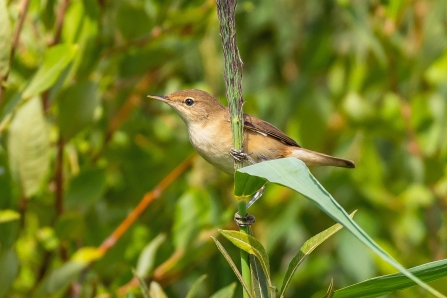Part of managing nature reserves is monitoring the wildlife that makes use of these precious places. One way we do this is by catching and ringing birds on nature reserves. This helps us study the way birds move between sites, as well as monitoring long term trends in the numbers of different species.
At Wheldrake Ings we work with Natural England, the Friends of the Lower Derwent Valley, and a host of volunteers to monitor migrating birds throughout the year. Since the project began in 2009 over 6,500 warblers have been ringed at Wheldrake and this allows us to see how 2018 compares to previous years.
For Reed Warblers it has been a very good year, with nearly a quarter as many birds ringed as normal. But other species such as Chiffchaff and Lesser Whitethroat are way down, more than half the usual numbers. This is probably due to the unusual weather we have seen this year - Chiffchaff and Lesser Whitethroat both arrive earlier in the year when we were still in the midst of freezing cold temperatures courtesy of the ‘Beast from the East’, meaning birds either left the site or failed to breed. But the Reed Warblers, which come in later, were met by a baking hot summer and plenty of insects to eat.
The project also helps track where birds move to and from, by communicating with other similar schemes around the world. For instance, one Sedge Warbler caught this summer was originally ringed in France. At the same time, a bird ringed on Wheldrake was picked up three days later in Norfolk.

